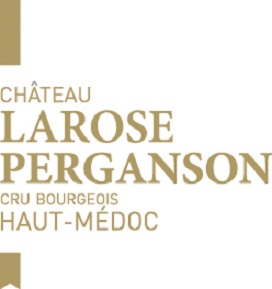Château Larose Perganson, Haut-Médoc Cru Bourgeois Supérieur


Vintage: 2019
| Vintage | Product Code | Format | Closure | Availability |
|---|---|---|---|---|
| 2019 | LP301A19 | 12 x 75 | Natural Cork | Available |
| 2019 | LP301M19 | 6 x 150 | Natural Cork | Available |
Producer
Château Larose Perganson sits next to the vineyards of Château Latour in Saint-Laurent-Médoc, on the border of Pauillac and Saint-Julien. In the hands of Winemaker Franck Bijon, the estate produces a ‘Cru Bourgeois Supérieur’ to rival many Classed Growths. A decade before 1855, Château Larose Perganson commanded the same prices as Growth estates. Unfortunately, between 1845 and 1855 the Château fell into disrepair causing it to be left out of the classification system.
After years of neglect, the property was purchased in 1986 by the owners of Château Larose Trintaudon, who worked hard to return Château Larose Perganson to its former glory. In 1999 the estate was certified by the sustainable development programme ‘Vignoble Responsable’ and in 2010 they were the first European vineyard to be rated ‘exemplary’ in sustainable development.
The estate comprises 35 hectares of vineyards, with an average age of 35 years, planted on well-draining gravel soils. Combined with high-density plantings of 10,000 vines per hectare, this results in very low yields, lending great flavour intensity to the final wine.
Château Larose Trintaudon is a blend of 53% Merlot, 39% Cabernet Sauvignon and 8% Petit Verdot. Before fermentation, it undergoes cold maceration for colour extraction, followed by lengthy skin contact to create supple tannins. The wine is then aged 50% new French oak barriques, 50% of which is new oak, for 14 months before bottling. The result is an intense, balanced expression that’s remarkably approachable in its youth while being capable of ageing for up to five more years.
Vineyards
Château Larose Perganson has 35 hectares of vineyard planted at a density of 10,000 vines per hectare, ensuring a very low yield per vine, which in turn lends more intensity in the wines. The vineyards are planted with Cabernet Sauvignon, Merlot and Petit Verdot. The vines are 35 years old on average and are planted on one of the oldest layers of Médoc gravel (the 'Pyrenean layer'). This encourages the vines to search deep for nutrients, resulting in a wine of excellent concentration.
Vintage
The 2019 vintage in Bordeaux was notable for its changeable weather from budburst all the way through to the end of the harvest. Winter and spring were relatively mild, with budbreak occurring earlier than usual at the beginning of April. Heavy rains during June were followed by a period of drought that lasted up to mid-October, resulting in a reduction in yield of around 10%. 2019 will be remembered as a winemaker’s vintage, where vigilance in the vineyards and on the sorting table was key to success.
Vinification
The grapes were carefully sorted twice (post-harvest and after destemming), to ensure only the best fruit was selected. After pressing, the must was cold soaked for seven days prior to the start of fermentation to ensure good extraction of colour and tannin. Alcoholic and malolactic fermentation took place in temperature-controlled stainless-steel tanks at 22-24°C. Délestage (rack and return) was used to extract colour and complex tannins by breaking up the cap and oxygenating the juice, which resulted in a softer and more fruit-forward wine. After fermentation, the wine was aged in French oak barriques, 50% new, for 14 months.
Tasting Notes & Technical Details
The wine is deep ruby red in the glass with alluring aromas of blackberry and blackcurrant and subtle notes of spice and graphite. The palate is full-bodied and structured with silky, ripe tannins and a lingering finish.
Alcohol (ABV)
13.5%
Awards
Silver
Decanter World Wine Awards 2022